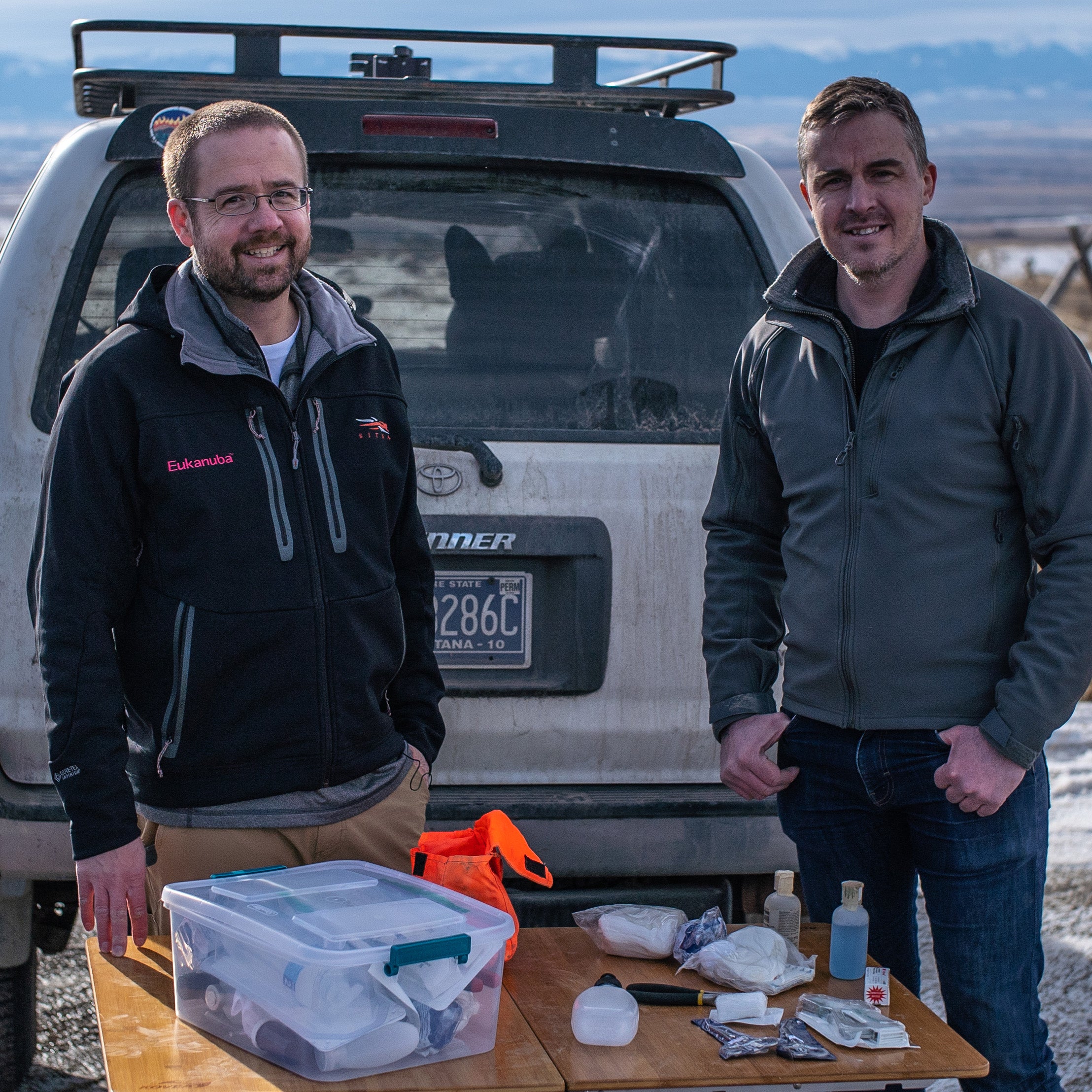I asked sporting dog veterinarian Joe Spoo to help me create a comprehensive first aid kit for my dogs. Let’s list everything he recommended, so you can make sure you’re prepared to save your dog’s life, too.
Digital Thermometer
Joe suggests using a thermometer,��not to monitor your dog’s outright temperature, but rather to track changes in it if your dog appears to be too cold��or too hot. Recovering temperatures are a good sign.��Ones staying too low or too high, or continuing in the wrong direction, are a sign that you need to take immediate action to cool your dog down��or warm it up.
4×4 Gauze Sponges
After you’ve cleaned a wound and applied antibiotic ointment, use sponges to absorb blood.
Surgical Soap
This is helpful for cleaning dirt from wounds.
Two-Inch Vet Wrap
This stuff sticks to itself, but not to fur, allowing you to stabilize joints or apply pressure to a wound.
One-Inch Tape
Use tape to secure gauze over wounds.
Saline Solution
Clean wounds with saline��rather than employing hydrogen peroxide, which can damage the��flesh further.
Triple Antibiotic Ointment
Apply this to wounds after cleaning them to prevent infection. Re-clean��and re-apply daily.
Cotton Swabs
Spoo recommends the ones with the wood handles, so you can reliably apply pressure if necessary to clean foreign objects from an orifice or wound.
Staple Gun
These allow you to close large wounds in the field. Spoo says you should work from the center of the wound, outwards, to minimize the number of staples you use.
Tissue Glue and EMT Gel
You can use these not only to close a small cut, but also to repair a broken nail or torn paw pad.
��
Needle Nose Pliers
For removing things like porcupine quills, fishing hooks, and other foreign objects that may be impairing your dog’s skin, pack a needle nose pliers.
Hemostats
These allow you to clamp a wound closed while you staple or glue it.
Clean White T-Shirt
If your dog suffers a major injury with a lot of blood loss, a simple T-shirt will be big enough to shove inside it. With the addition of pressure, that may help control blood loss. And��you’ll be able to monitor how that’s going because you’ll��see blood soaking through the white cotton.
Saline Eye Wash
If your dog has something in its eye, squirt this into the corner��to remove the object.
Ophthalmic Ointment
If your dog’s eye is cut or irritated, this may be able to sooth pain and irritation.
50-Percent Dextrose Solution
If your dog suffers from hypoglycemia, you can feed it this to return its blood sugar to safe levels.
Hydrogen Peroxide
Rather than using this to clean wounds, Spoo recommends you use it to induce vomiting in case your dog ingests poison.
Prescribed Medications
Bring extra prescriptions with you in case your dog needs them.


